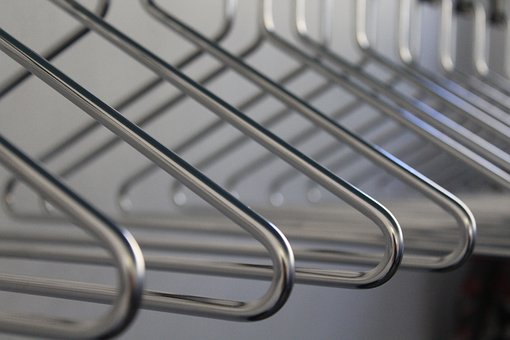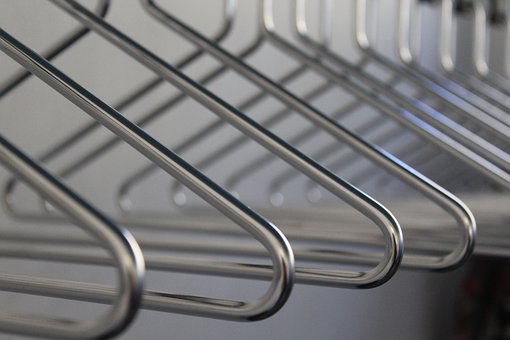
Stainless Steel and Its Use in the Industry
Stainless steel is quite the versatile material, which is why it has found applications in various industries all around the world and in the Philippines. Suppliers of stainless steel then face a challenge to meet the enormous demand for this useful metal.
Stainless steel was first used in making cutlery but soon found its way into other industries because of its resistance to corrosion and other numerous characteristics. While resistance to corrosion is still one of the most important characteristics of stainless steel, the mechanical properties of the material are steadily being recognized.
This is a material that keeps on finding its way into new applications in different industries on an almost daily basis. From the humble zipper to the largest skyscraper, stainless steel is an important part of not just our society, but modern life itself. The barbells and different pieces of equipment that we use in fitness centers also consist of this amazing material.
Aside from the strength, resistance to corrosion and low maintenance requirements, stainless steel from suppliers in the Philippines also has a long life cycle and is completely recyclable. There is a wide spectrum of industries that have come to rely on stainless steel including the automotive industry, construction industry, and many more. Stainless steel is simply the most effective solution for many different applications. Even in the industry of windows, aluminum and stainless steel is all the house owners need to feel safe and happy inside their home.

What is Stainless Steel
The term “stainless steel” does not actually refer to just a single specific material. Rather, it is the name given to a collection of alloys that are resistant to corrosion and contain at least 10.5% of chromium.
The chromium that is present in stainless steel reacts with the oxygen in the air to create a very thin, non-reactive oxide film on the outside surface of the steel that is very rich in chromium. It is the presence of this thin film which gives stainless steel its corrosion resistant properties.
This passive film made of oxide is not like coatings like paint or galvanizing. This film is different in one very special way: it re-forms and continues to protect the steel if it is damaged by mechanical means or through abrasion.
Why Do Materials Corrode?
Normal metals can only exist in nature if they are combined with other elements, only with the exception of metals such as gold and platinum which can be found in their pure form naturally. Therefore, corrosion is a naturally-occurring phenomenon brought on by the desire of nature to combine together elements that have been produced in a pure form by man for his own use.
For instance, iron exists naturally as iron ore. Pure iron, on the other hand, is unstable and wants to “rust”, or to combine with oxygen in the presence of water. Carbon steel without any layers of protection will eventually form a coating of rust which in a sense actually protect the rest of the steel. Constantly removing the rust exposes a new, fresh layer of steel to be attacked. This is considered as general corrosion.
Different coatings can inhibit the rusting process, particularly coating with zinc (also known as galvanized steel), epoxy resins, or painting. Another straightforward way to reduce corrosion is to put corrosion inhibitors into the solutions that come in contact with iron that would otherwise cause it to corrode. One of the most common examples of corrosion inhibitors is the solution added to the coolant used in cars.

The Advantage of Stainless Steel
Stainless steel competes with carbon steels that have protective coatings, as well as other metals such as brass, bronze, and aluminum for a wide variety of uses. Stainless steel is successful in this regard because of the fact that it has one unique advantage. The chromium that is present in stainless steel has a great affinity for oxygen. It will form on the surface of the steel at a molecular level and leave a film of chromium oxide.
The film itself is about 130 Angstroms thick, with one Angstrom being one-millionth of one centimeter. This can be compared to a tall building being protected from the rain by a roof that is only as thick as a sheet of ordinary copy paper. This layer of chromium has been described as tenacious, self-renewing, and passive.
Passive means that this layer does not react or influence other materials; tenacious means that it can cling to the layer of steel and is very hard to transfer anywhere; self-renewing means that more chromium oxide can be formed if the chromium from the steel is exposed to the air because it is damaged or forcibly removed.

Types of Stainless Steel
Austenitic Stainless Steels
Austenitic stainless steel can display an excellent resistance to corrosion because it has a high amount of chromium in it. Stainless steels that are austenitic are ductile, strong, non-magnetic, and can be readily welded and formed. Although it may reduce the corrosion resistance of the material and make it slightly magnetic, you can achieve higher strength levels by cold working the metal. Austenitic steels are commonly used in the chemical, pharmaceutical, and construction industries.
Martensitic Stainless Steels
Martensitic stainless steels can be hardened through heat treatment because of the high amount of carbon present in it. It can even obtain ultimate tensile strengths that exceed 2000 N/mm2. Even though they tend to be cheaper than austenitic stainless steels, they are magnetic and cannot be welded easily. They also have a limited range of applications suitable for industrial components such as dies, valves, and knife blades because of their low resistance to corrosion.Ferritic
Stainless Steels
Ferritic steels are less ductile and much weaker when compared to austenitic steels. Their strength can be increased to a certain extent through cold working, but they are still magnetic. Common ferritic steels are typically cheap compared to other kinds of stainless steels, but the trade-off is that they cannot be welded in thick sections. They have superior resistance to cracking due to the stress brought on by corrosion, but they have a poorer resistance to pitting. The use of ferritic stainless steels should be limited to indoor applications if you value appearance. They are commonly used for shop-fitting internally.
Duplex and Super Duplex Stainless Steel
The microstructure of duplex and super duplex stainless steels are a mixture of both austenitic and ferritic. They are generally stronger than austenitic stainless steels, but they are not as easily formed. Their resistance to corrosion is better than that of austenitic steels, especially their resistance to cracking due to corrosion stress, yet they can be welded and are still magnetic. Duplex and super duplex stainless steels are commonly used in the chemical, oil, construction, and paper industries.
While Philippine stainless steel suppliers such as One Sky has the capability to fabricate the different types of stainless steel, most building products are generally manufactured from Austenitic stainless steel. This type of stainless steel is preferred by many and is suitable for the vast majority of uses available.

The Different Industries that Use it
Food Storage and Production
The most common everyday use of stainless steel is for making cutlery. The cheapest kinds of cutlery are usually made out of stainless steel with lower grades. The steel that is used in knives can be tempered and hardened so that the knife blades can hold a sharp edge.
A large amount of stainless steel material is also used in food storage and production. Stainless steel that can withstand normal temperatures and acid concentrations are typically used in salted and frozen fish storage, ham curing, dairies, and milk storage. Certain kinds of stainless steel are also used for storing liquids with low concentrations of phosphoric acid such as cola.
Stainless steel is used in food production very often not because the food itself is corrosive, but rather, the use of stainless steel allows for more efficient and faster cleaning. An example of this is in ice cream production, stainless steel is specified so that strong antibacterial rinsing and cleaning systems can be used.
One of the more underrated advantages of using stainless steel from Philippine suppliers such as One Sky is that it does not impart any taste to the food that it comes in contact with. This has created an interesting anomaly in winemaking; traditional winemaking makes use of oak barrels while newer wine productions use large vats made of stainless steel for economies of scale.
In conventional winemaking, however, the acid present in the wine dissolves some of the wood to give it an “oak” aftertaste. Winemakers that use stainless steel vats have to deliberately put in oak chips to create the same effect and satisfy traditional wine drinkers.
Pumping and Fluid Containment
There has been an increase in the demand for stainless steel pipes, pumps, valves, and tanks for the pumping and containment of gases, acids, and oils. One of the first major success stories for the use of steel in this industry is the storage of dilute nitric acid. Stainless steel was more robust than other materials and could be used in thinner sections.
Architecture
Architecture is a growing market for stainless steel since many modern buildings use it for cladding. It was first thought that the carbon steel used in reinforced concrete when first started to be widely used would not rust because cement, which is derived from limestone, is alkaline. However, the constant use of grit salt on bridges can change the pH to acidic, resulting in the steel rusting and expanding which led to cracks in the concrete.
Although it is initially expensive, stainless steel bars are proving to have very good life cycle costings. The anti-vandal characteristics and low maintenance costs of stainless steel have also allowed its market to grow in the building of ticket machines, street furniture, and public transport.
Why Use Stainless Steels from One Sky?
Stainless steel from Philippine suppliers such as One Sky has been successfully used in the construction throughout the country for many years now, especially when it comes to materials such as aluminum. One Sky has not only broadened in the use of stainless steel in Metro Manila, but the Philippines as a whole! The use of stainless steel has seen a rapid increase during recent times because the benefits of stainless steel over traditional materials are becoming more widely recognized.
Stainless steel from suppliers in the Philippines like One Sky can offer many advantages to the buyer such as:
- High strength and ductility
- Non-magnetic
- Life-cycle costing benefits
- Usability even in high and low temperatures
- Excellent resistance to corrosion
- 100% recyclable material
- Made of 60% recyclable content
- An aesthetically pleasing finish on the surface
- Resistant to unsightly stains
Life-cycle costing is slowly being recognized as the real way to establish the true cost of building materials. Using stainless steel from One Sky can mean that you will no longer need any expensive refurbishment or remedial measures that might be required during the life of the structure.
Stainless steel suppliers in the Philippines like One Sky will provide you with long-term solutions that are cost-effective to you since there is an increasing trend for higher specification and longer service life.
One Sky’s stainless steel is also 100% recyclable which means that even if a stainless steel product finally reaches the end of its long service life, it can remain a valuable source of its main alloying elements. Elements such as nickel, molybdenum, and chromium can be easily separated from the other materials and recycled back into the production process.
Stainless steel suppliers such as One Sky makes sure that their products can be part of an economically viable and self-sustaining recycling process. One Sky understands that there can be considerable savings in energy as well as reduced carbon dioxide emissions in the production process of stainless steel that uses recycled materials. Typically, the amount of recycled material in any stainless-steel product is 60 percent, and because scrap availability is the only limiting factor, this percentage can see an increase as the use of stainless steel continues to grow.
One Sky Aluminum and Stainless Supply Enterprise have continued to be one of the best suppliers of stainless steel and other materials in the Philippines since 2011. One Sky enjoys a strong presence in the market and has quickly gained product dominance in the industry in just a short period of time.
If you are interested in the top quality stainless steel and other materials One Sky offers, click here and find out more.